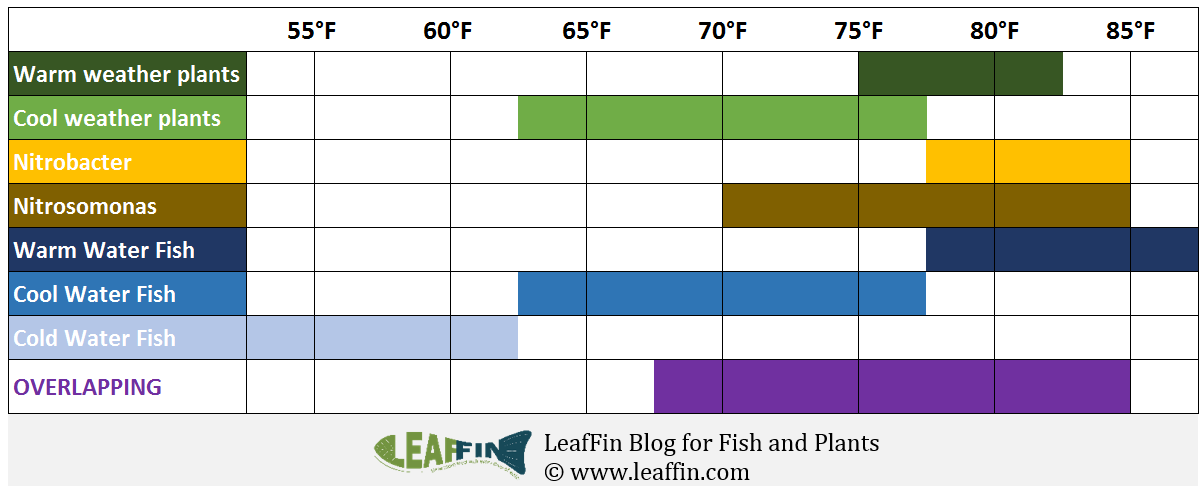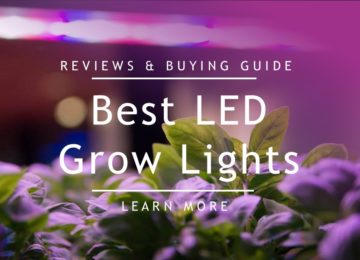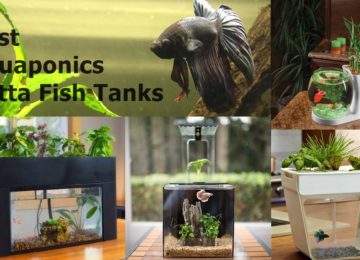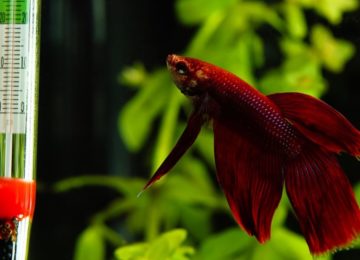Aquaponics involves a symbiotic partnership between fish and plants to create the perfect year-round food source. In this article, you will learn about the most important factors to consider while choosing the fish for your aquaponics system.
Most people who begin this type of venture tend to have an idea of what types of plants they’d want to grow, but all too often make fish species related mistakes for aquaponics. This can lead to frequent dead fish in the system which is obviously not helpful for aquaponics.
You need to consider several Legal, quality, or value issues for choosing your fish. Some fine for home consumption, but not system optimization. Few species may be banned in your state or some fish may not thrive in your area. Some are edible while others are ornamental. Let’s dive in deep to learn about these factors and finally choose the perfect fish for aquaponics.
Table of Contents
1. Purpose? [Eat, Sell or stock]
Besides providing nutrients for plants, the purposes of rearing fish in Aquaponics can be
- Food Fish Production for home-use and commercial purpose
- Eggs and fingerlings production for sale to food fish producers
- Catchable-sized Sportfish for recreation purpose
- Stocking in Fee-fishing waters
- Fish Bait Production (bait minnows, frogs, crayfish & worms) for personal use or selling to anglers
- Aquarium pets (goldfish, Koi, turtles, and other aquatic animals ).
The easiest and least expensive way to start is by growing a few fish for home-food use or personal recreational fishing. Small farmers expand to larger scale after they gain the necessary experience and skills.
Fish farming for Commercial Aquaponics can be expensive, time-consuming, a high-risk business and needs require proper planning as well as knowledge of fish biology and good management skills. A careful study of economic considerations, especially product demand, financing, production costs, and marketing should be conducted before investing in a commercial fish farm.
If you are not a vegan and want to consume all parts of your harvest, choose an edible fish you enjoy eating. However, the detailed answer deserves a bit more deliberation. Trout, Tilapia, and Jade Perch are considered as great food fish.
Largemouth, sunfish, walleye, channel catfish are considered best for stocking in ponds & lakes that is multimillion
dollar industry in many areas.
If you are planning to sell, you may need to consider a lot of factors. Comet goldfish will be an extremely poor choice as they have no real market value. The feed will cost you more than fish is worth. You will also not like to raise slow growing
2. Coldwater, Coolwater or Warmwater?
Freshwater fish can be divided into the following 3 categories. Select the fish category that will thrive in your geographic area, pond type, and heating cost considerations.
| Temperature Group | Coldwater | Coolwater | Warmwater |
| Temperature Range | <60°F | 60-75°F | 75°F< |
| DO Requirement | 5 PPM | 4 PPM | 2-3 PPM |
| Ammonia Tolerance | Low | Low | Moderate |
| Protein Requirement | High | Moderate | Moderate |
| Winter Heating | - | Low | Mod-High |
| Examples | Salmon and trout | Pike, Yellow Perch, Musky & Walleye | Tilapia, Bluegills, Catfish & Crappies |
If you’re in the Middle East or Australia, you should choose tropical fish or warm water fish. If you reside in a colder climate like UK, Canada, and the northern USA, you should consider cool/cold water fish.
Check this post about the role of temperature in Aquaponics
Warm-water Fish are typically hardy throughout most of the US and can survive winters in the north. They grow best when water temps are in the 80-degree range and require 2-3 PPM oxygen levels. Levels of 0.5-1 PPM are lethal for warm water species.
Cold-water Fish need proper depth ponds to maintain cold water areas. The minimum oxygen level for these species is typically 5 PPM. When levels drop to 2-3 PPM, it is lethal on cold-water species. Also, the bigger the individual fish, the higher the oxygen levels need to be to support life.
Cool-Water Fish fall in between the other two groups. They require a minimum of 4 PPM of oxygen and levels around 2 PPM or less are considered lethal.
Check this post to know about the Role of Dissolved Oxygen in Aquaponics
It is important to simultaneously choose the plants you want to grow and the right kind of fish you wish to rear. Different fish and plants thrive at specific temperatures so make sure that both plants and fish will be suitable for the given water and seasonal conditions.

Read more about temperature range of fish and plants in aquaponics here
Similarly, you need to match the optimum DO and pH levels of the fish and plants you choose for the aquaponic system.
3. Growth Rate
The growth rates and range of fish vary widely among different species. Many aquaponists prefer fast-growing fish to dine or sell them. However, If you don’t plan to buy fingerlings every 6 months, you may want fish that grow slowly and not larger over time.
With your aquaponic system, it is better to have a combination of fish with different growth rates to harvest fish regularly over a long period of time. It is also critical to consider the time of year at which the fish are ready to be harvested.
It is important to note the difference between maximum fish poundage and yearly pound production. Tilapia (as with most fish species) tend to grow faster in warmer water with longer daylight hours, natural or artificial. It is possible with certain Tilapia species to grow to a market size (1.25 pounds) within 6 months. This would give you two crops of fish per year in a single tank thereby doubling the maximum poundage numbers to get annual yield poundage.
Bluegill takes 2-2.5 years to market size (1 lb). They also have Poor feed conversion (3.5-4.4 lbs feed/lb bluegill) and dress out percentage (27%).
4. Fish Type & Maintenance Difficulty
Some fish are hardy and don’t require much care whereas others are relatively harder and costlier to raise. If you don’t want to make a lot of efforts and put much time to maintain your system, choose a sturdier fish that do not mind dirty water and are immune to parasites and disease.
Koi and tilapia are hardy fish and are considered great for beginners. On other hands, trouts need very high standards in term of water quality (higher DO levels, lower nitrate levels, stable pH).
5. Adult Size & Space Requirements
Keeping in mind the max size of the fish, the available space in the tank and your maintenance budget, you need to stock your tank with a suitable amount of fish. You cannot put a baby whale in your backyard pond and thinking it will stay the same size. right? So, be aware of the max size of fish that you’re planning to raise. Besides the size, the temperament of some fish also dictates their space needs. Benthic fish need more horizontal space and will not occupy the water column.
Channel catfish can grow to a size of 40-50 lbs and needs a large fish tank of at least 250+ gallon. Koi are ideal for large ponds. Murray Cod are only suited to raise in tanks at high density to suppress territorial behavior.
6. Filtration Capacity
Moreover, the tank size does have a bearing on the number of fish you can grow (mainly for small tank sizes). the filtration capacity of the aquaponics system (grow bed) ultimately determines how many fish you can keep in the tank. You need to balance the needs and capacity of plants and not overpopulate or under-populate the fish. Check the fish to plants ratio here.
An overcrowded fish tank can disrupt the oxygen and ammonia levels in the water, as can an underpopulated tank. The rule-of-thumb for freshwater fish stocking is 1 inch of fish length per gallon of water. Read more about Fish to Water Ratio in Aquaponics here.
7. Temperament
You should consider the temperament of the fish as it decides the quantity and type of fish that can be kept in a single tank. Some fish like Bettas are the cannibal and can only live alone. You may like to look into small aquaponic tanks for the betta fish. To suppress the territorial behavior, Murray Cods can only be kept in tanks at higher densities. Being peaceful tank-mates, Catfish make a great companion with tilapia.
8. Breeding Habits
Breeding is also a vital factor to consider when choosing a fish. Some species like jade perch don’t reproduce in captivity which can be frustrating. You may want species like tilapia that can reproduce easily and quite quickly. However, this may create problems for some poorly-built systems. You will also need to monitor the stocking densities during the spawn. You will also need separate tanks for a brooding fish to spawn and keeping the juveniles. Read more about raising tilapia in aquaponics here.
9. Regulatory Consideration
You must know your state regulations on fish keeping and aquaculture. There can be many regulations like for using state waters, discharging into state waters, stocking ponds on private property, purchasing stock from out of state, and transporting live native species. Several “invasive” species are also not allowed in many states as if they get out into the waterways, they can cause a lot of problems and wreck ecosystems.
In Ohio, imported fish must be accompanied by health inspection certificate, disease testing results, and invoice. Any fish or crustaceans raised as a food source requires an aquaculture permit.
In some states, you are allowed to keep the Tilapia Zilli only with a Restricted Species Permit issued by the CDFG. You will also have to register yourself as an aquaculturist with the CDFG to get permission to rear tilapia in your aquaponics system. You may also need an importation permit to import tilapia into some states. Find more information on aquaculture in California on the CDFG Aquaculture webpage.
Since ornamental fish do not usually require a permit. Hence, to save time from inspections, permits. fees and licensing hassle, Most people plan to use goldfish and koi before they move on to any edible fish.
So whichever fish you shortlist for your system, check the legal status of the species with the fisheries department of your state.
10. Omnivores, Carnivore or Herbivores?
Fish selection affects diet choice, nutrient availability and tank mates. Based on their feeding patterns, fish are classified into the following 4 groups: Herbivores, Carnivores, Omnivores, and Detritivores
Herbivorous fish eat algae, plants, and fruits. Their flat teeth finely chew the food before swallowing. They have a special intestine designed to break down plant matter. Herbivores are not the best option for a community tank because they need more frequent feedings (several times per day) as they don’t have a stomach to hold large volumes of food. Herbivorous fish require a diet of 22- 35% protein.
Omnivores eat both vegetable and meat matter with the exception of some grains and plants that they cannot digest. They have properties of both herbivores and carnivore that is evident in their teeth and digestive tract. Omnivorous fish is an excellent option for a community tank because they are easiest to feed. These fish eat live foods as well as flakes. Omnivorous fish require a diet of 32- 38% protein.
Carnivorous fish are meat eaters and require live foods. Their large mouth and sharp pointed teeth can grasp and tear off their prey. They swallow the food without chewing and have a larger stomach designed to hold an entire fish. Their stomach lacks the ability to digest vegetable matter. Carnivores are not appropriate for a community tank because they will chase down and eat other fish. Carnivorous fish may require 40-50% protein in the diet. Species include Cichlids, Bettas, Bluefish and Seabass/Barramundi.
Check this page for Suggested Herbivore, Omnivore, and Carnivore Diets for different FreshwaterFish
Conclusion
Although there is no “perfect allrounder” fish for aquaponics, You will desire following biological and economic features:
- Adaptable to polyculture (multi-species farming)
- have well-known culture requirements
- Adaptable to several culture systems types
- tolerant of crowding and high-density conditions
- be capable of reproducing in captivity
- produce numerous and hardy eggs and larvae (young)
- be readily available as eggs, fingerlings, and adults
- Immune to disease and parasite infestations
- exhibit high survival (low mortality) rates
- exhibit rapid growth to a large maximum size
- not a cannibal or territorial
- readily adapt to artificial feeds
- exhibit high feed conversion rates
- have good dress-out weight values
- have a healthy appearance and color
- High market demand



